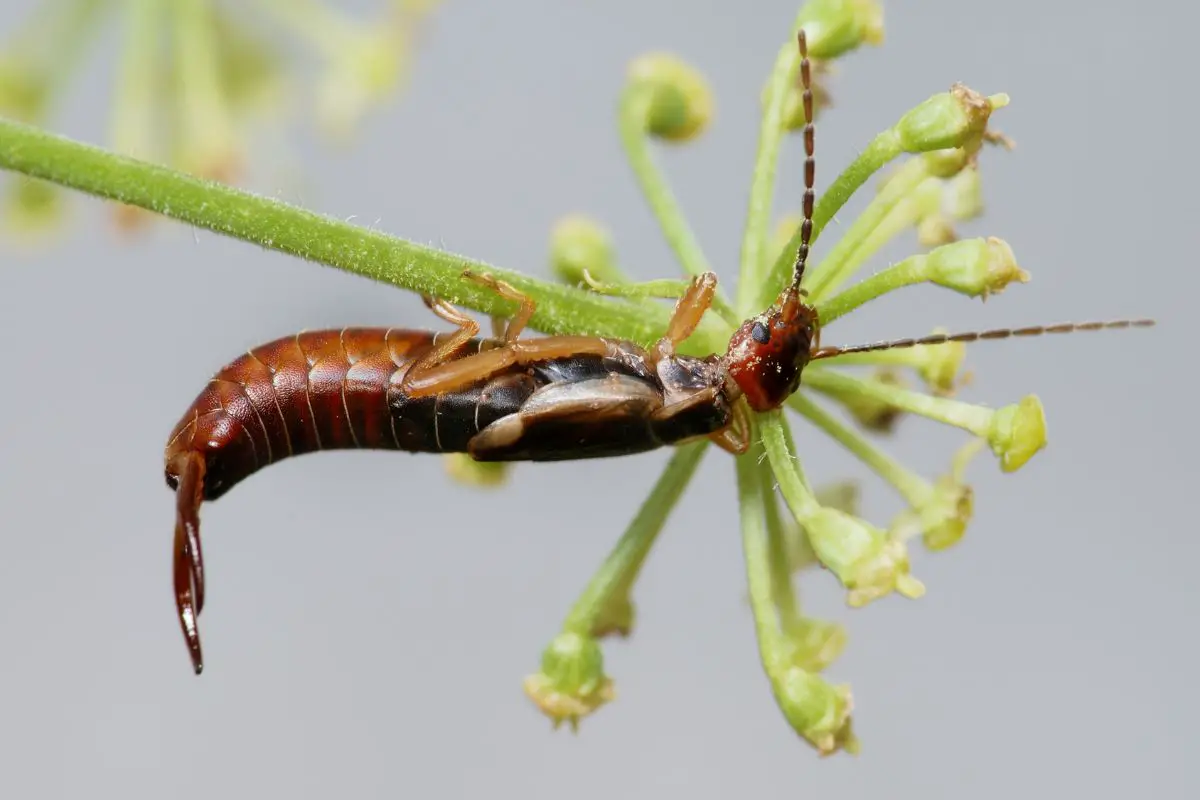
Earwigs are members of the beetle family. They have flat, narrow, dark bodies and pincers at the end of their abdomens. They are omnivorous, and harmless to humans despite their appearance.
In this article, we’ll look at some insects that are like earwigs, and how you can tell the difference.
1. Silverfish are blind and deaf insects that come out of drains and live in moist areas.
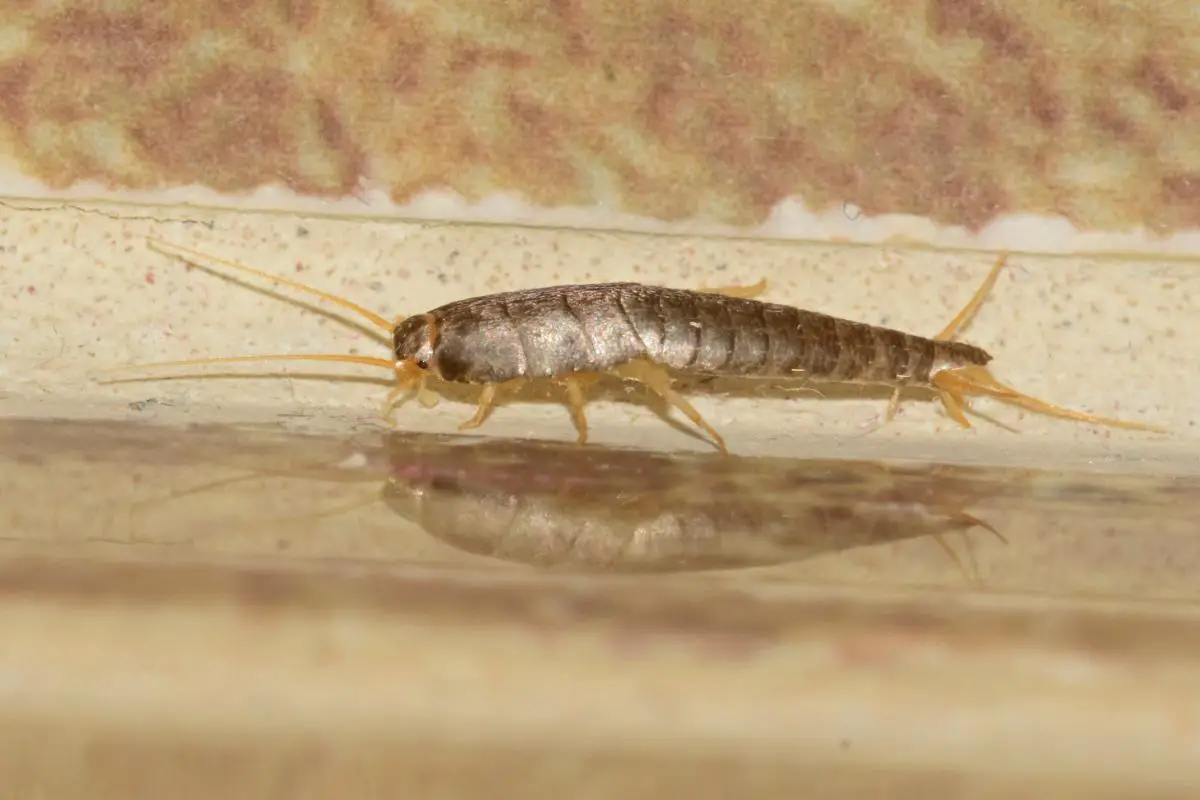
Silverfish live in cool and damp areas. They are primitive insects. Their bodies are teardrop-shaped, with six legs and a back covered in silvery plates.
Their side-to-side movements are one of the reasons people call them silverfish. They live on a diet of sugar and starches. They find food everywhere, including natural fabrics and even the glue in bound books. Silverfish are a pest.
They can contaminate food and cause damage to clothes and other possessions. They are very safe and they don’t bite or sting humans. They are herbivores, except when they eat each other.
Silverfish are enthusiastically cannibalistic. Silverfish are like earwigs in that they have 2 cerci or prongs that come out of the back. In earwigs, these cerci can be used to grasp and hold prey.
The cerci that silverfish have are only used for sensing the chemical composition of the ground. Silverfish are deaf and mostly blind, and they rely on other receptors. Silverfish and earwigs also both enjoy cool and damp environments.
Silverfish are different from earwigs in size. Silverfish are usually 2-12 mm long. Earwigs are larger at 7-50 mm long. Earwigs are yellow or dark brown.
Silverfish are gray and silvery. Earwigs are omnivores, while silverfish are herbivores, except when they are cannibals.
2. Firebrats like kitchens, laundry rooms, and anywhere with a heat vent.
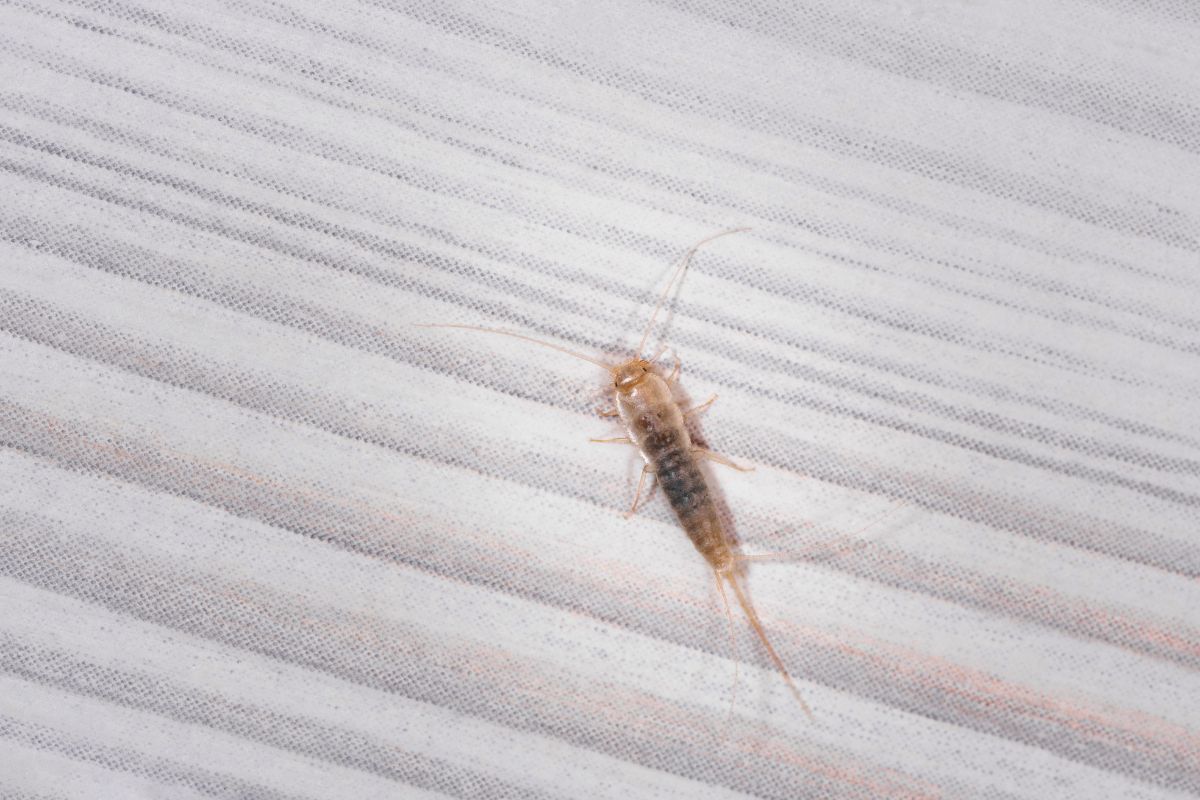
You can find silverfish in cool and damp environments, but firebrats love the heat. You’ll find firebrats in heating ducts and around ovens or heaters – anywhere the temperature stays high and the air is humid. Firebrats are part of the same family as silverfish.
They have a teardrop shape and a plated back with six legs. Silverfish are gray and silvery, but firebrats have a yellow or brown, mottled color. Firebrats also eat sugar and starches, and like silverfish, they can live for up to 8 years.
Firebrats are like earwigs in that they have 2 cerci behind them. Earwigs can use their cerci to grasp things, but the cerci firebrats are like more silverfish. They use them to sense the ground, rather than to hunt or mate.
Their coloration is also similar to earwigs – brown, or mottled yellow. It would be easy to mistake them at first glance. You won’t find earwigs in the same places as firebrats.
Earwigs prefer cold and damp places where silverfish live. Firebrats seek out hot spaces. Firebrats are closely related to silverfish, and they are much more like their silverfish cousins than they are earwigs.
3. Jumping bristletails are like earwigs that can leap.
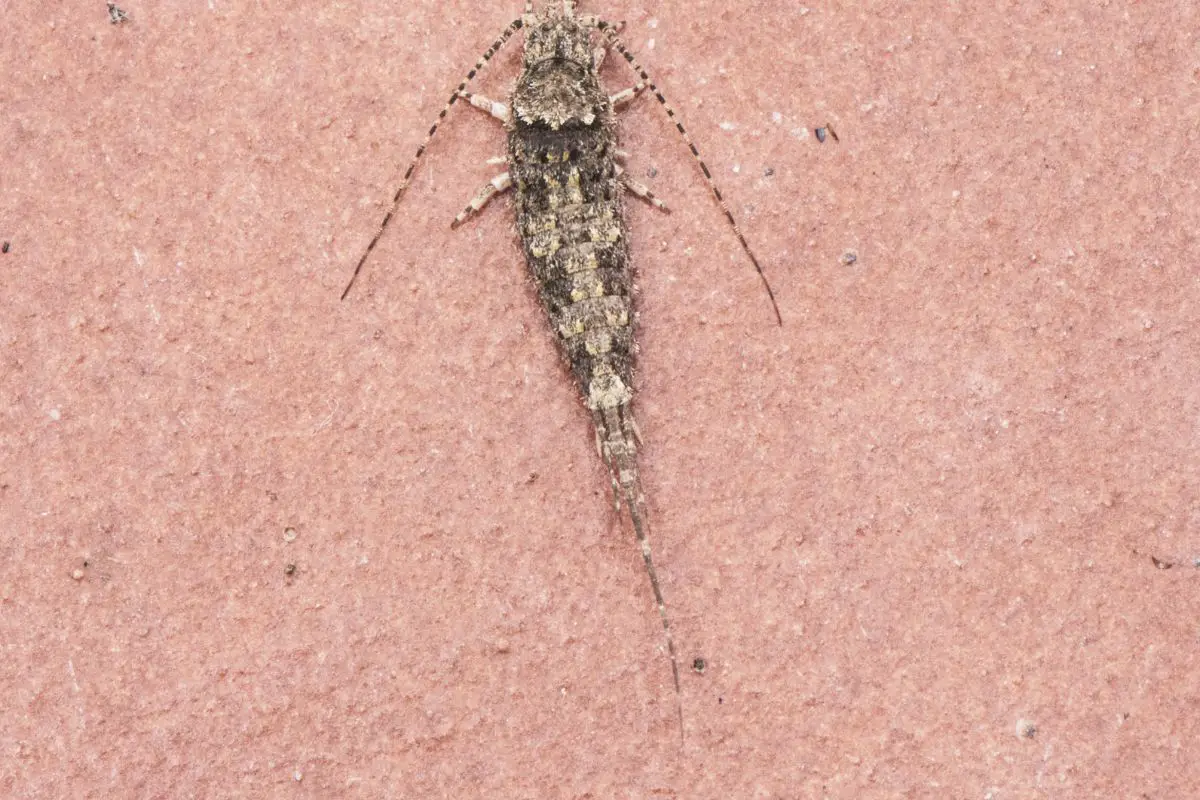
Earwigs can be found indoors or outdoors. Jumping bristletails don’t come into the house most of the time, but they do look a little bit like earwigs. They can be found in the forest in wet places, like underneath rocks and in rotting logs.
Jumping bristletails are related to silverfish and firebrats. They have the same characteristic three “bristles” behind them. The one in the middle is a terminal spike, and it’s flanked by two cerci.
These look a little bit like the cerci that earwigs have. Jumping bristletails have a hunch in their backs that makes them look a little bit like shrimp. The long bodies that jumping bristletails have, along with their darker coloration, make them look like earwigs.
You can find them in similar cold and wet locations, at least outdoors. Jumping bristletails are more closely related to silverfish and firebrats. Maybe the biggest difference between earwigs and jumping bristletails is that earwigs can’t jump.
Jumping bristletails are able to leap from 4 to 12 inches forward to help them escape from predators.
4. 2 pronged bristletails can be confused with earwigs for their pincers.
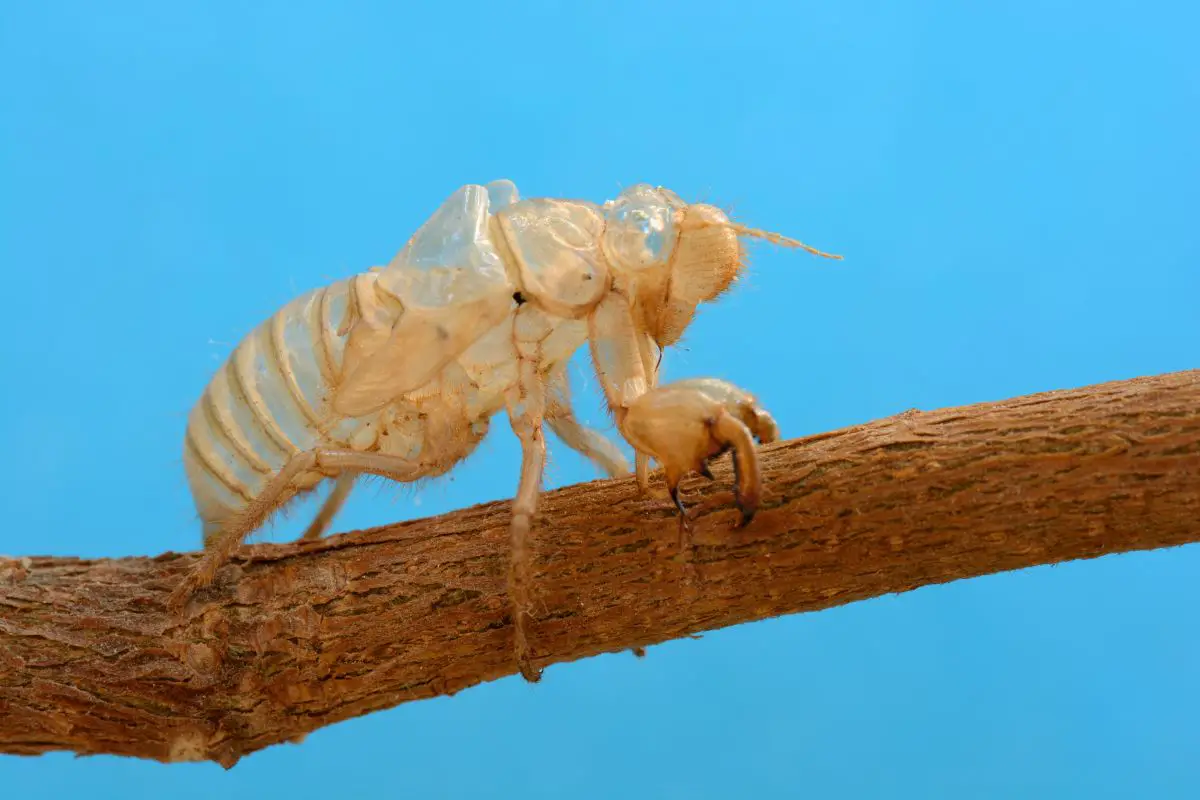
These relatives of silverfish live in cold and damp places like earwigs. They feed on decaying vegetation. 2-pronged bristletails are translucent white, yellow, brown, or black in color. They have long prongs on their heads that give them their names.
Although “bristletail” makes it seem like they are related to silverfish, firebrats, and jumping bristletails, they are actually very different. There are many different species, all grouped into the order diplura – ‘2 tails’. Some species can grow up to 2 inches in length.
These insects look like earwigs because of the prongs on their heads. This can be mistaken for the cerci pincers that earwigs have. They are also a similar size and can be found in the same kind of cold and wet environments.
Earwigs and 2-pronged bristletails can both look scary. Earwigs won’t bite or sting you. At worst, they can pinch you a little bit by accident. 2-pronged bristetails are different.
They have prongs on their heads, not their abdomens. They can bite and sting humans, which is a problem because they can also carry diseases.
5. Cockroaches are like earwigs, but faster and less picky about what they eat.
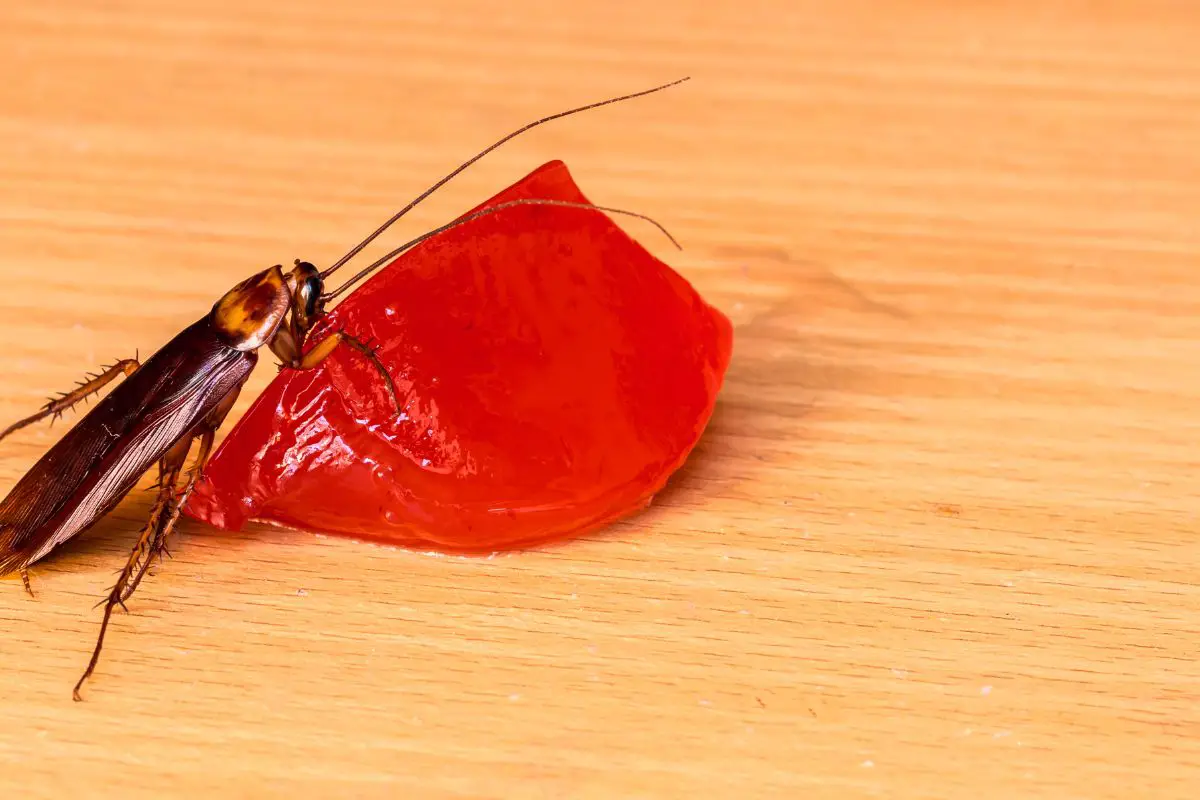
Cockroaches are nocturnal, like earwigs, and they are also dark in coloration. Cockroaches are usually much larger – and much faster – than earwigs. Cockroaches live in warm and moist areas.
They eat pretty much anything, from leftover food to other insects. They are difficult pests to get rid of. They multiply quickly, they are hard to kill, and they can carry diseases.
If you see a cockroach, the chances are that there are many more living in your home. Cockroaches are very resilient. They are capable of breathing through their thorax and abdomen, so they can live for a full week without a head!
Cockroaches are like earwigs in that they have flat, oval bodies that are brown or black. They are about the same size in length. The largest earwigs and cockroaches are both about 2 inches long.
They both have wings, and both species are reluctant to use them. Cockroaches are much bigger and wider than earwigs, which are very narrow and flat. Earwigs don’t usually carry disease, but cockroaches do.
The easiest way to tell them apart is to turn a light on. Earwigs are attracted to the light. Cockroaches are extremely fast at diving to the darkest corners.
6. Scorpions and earwigs both like to raise their tails up.
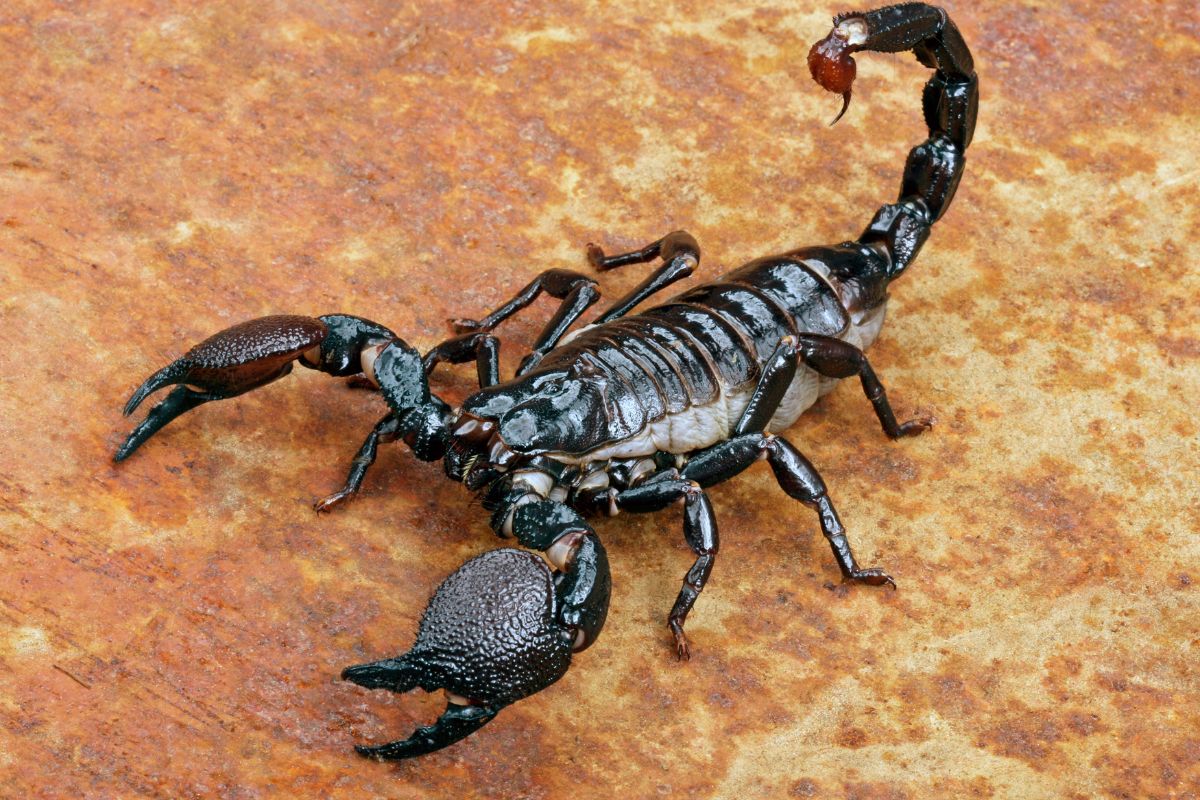
Scorpions and earwigs are not closely related. Scorpions are arthropods, more closely related to crabs and lobsters than to earwigs. They do have one thing in common.
Earwigs and scorpions both have a tail that makes people scared. Scorpions have heavy claws at the front of their bodies, and a tail that curls up behind their body to strike, defensively. They prefer cool, dry environments.
You can find them in the desert, or in drier climates. Scorpions also love to hide in cool, dark places, and sting defensively with their venomous tail. All of this makes them a scary pest to humans.
Earwigs have tails with pincers that look scary, especially in males. Earwigs will also curl their tails up behind their bodies defensively. They do look a little bit like scorpions when they do this.
Earwigs and scorpions are both usually yellow, brown or black. Scorpions have claws that are much larger than an earwig’s forearms. Scorpions are, in general, much larger than earwigs.
Earwig’s tails look scary to humans, but they can’t sting or strike out ahead of the earwig. Many species of scorpion are venemous and they use their tails as a way to sting.
7. Termites have heads with pincers and love to infest your home.
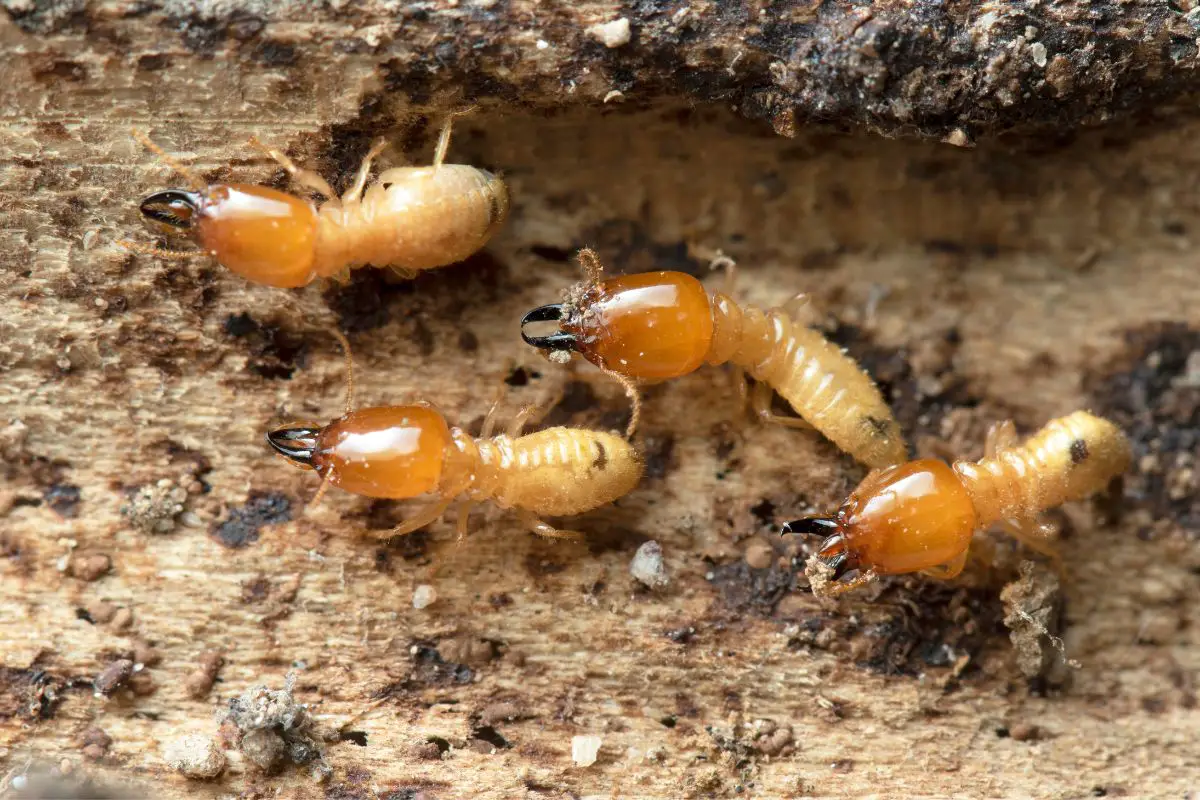
Termites live in colonies of hundreds or thousands, and many species build in wood or wooden structures. They look like ants with large heads. They are usually about half an inch long.
Termites are white, yellow, or light brown. They have two sets of wings on their backs. Famously, termites eat wood and build nests out of wooden structures, which makes them an incredibly costly pest to have around.
Termites and earwigs are often mistaken for each other. They can be a similar size and they can sometimes be found in similar places. Termites and earwigs are very different in terms of their diet and the effects that they can have on a home.
Earwigs are darker in color. They have one set of wings rather than two. Earwigs are not part of larger colonies, and they do not eat wood.
8. Centipedes are creepy and crawlier than earwigs.
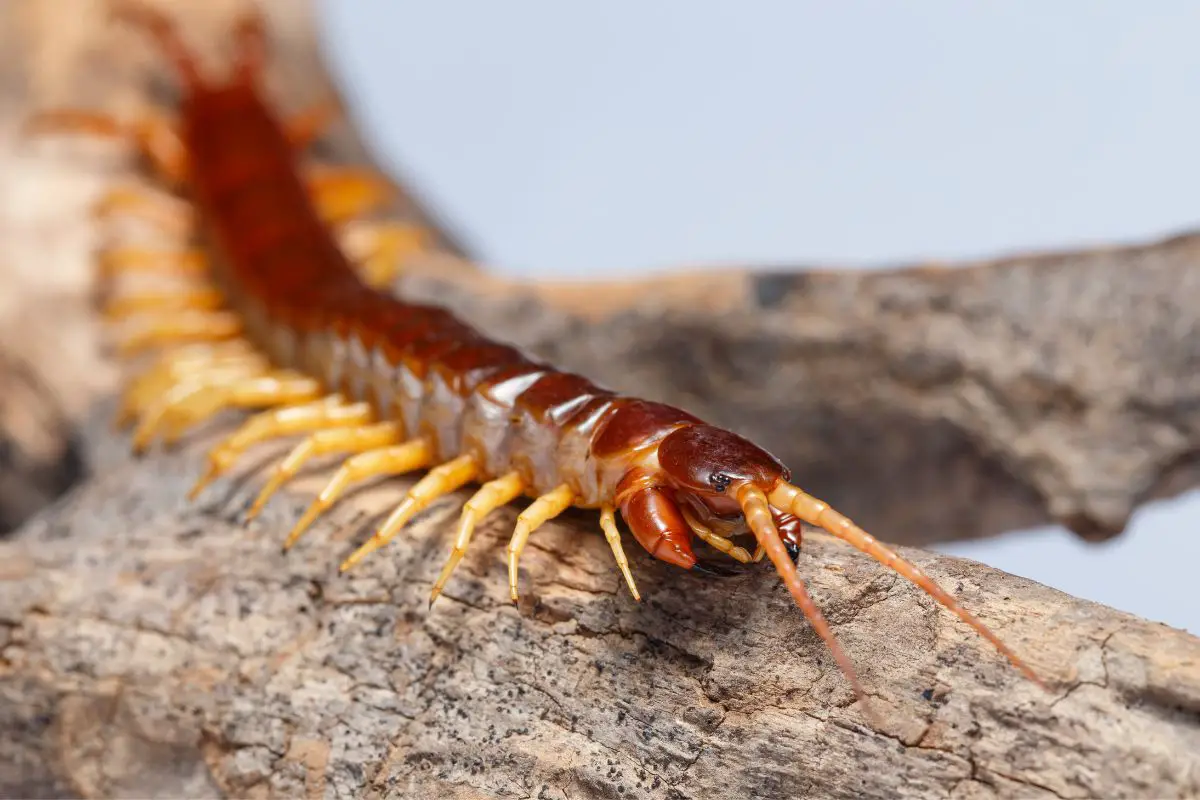
House centipedes are common insect carnivores that prey on spiders, cockroaches, and silverfish. Centipedes, despite their name, don’t usually have a hundred legs. They can have anywhere from 15 to 177 legs, depending on the species.
Many centipedes are venomous, and most are extremely fast. They use their long legs and antennae to reach their prey quickly and inject them with venom. They are frightening predators for the bugs in your home, but most humans have nothing to fear from centipedes.
Their bites and stings are uncomfortable and painful, but not serious or life-threatening. Earwigs and centipedes are both nocturnal, and they both like cool and wet spaces. The cerci that earwigs have can sometimes look a little bit like the trailing legs of house centipedes.
Centipedes are usually much larger than earwigs. They can be up to 15 inches long. They usually have a lighter coloration and markings.
Earwigs are darker brown or black. Centipedes are carnivorous, while earwigs are omnivorous.
9. Rove beetles cling to leaves and love moisture.
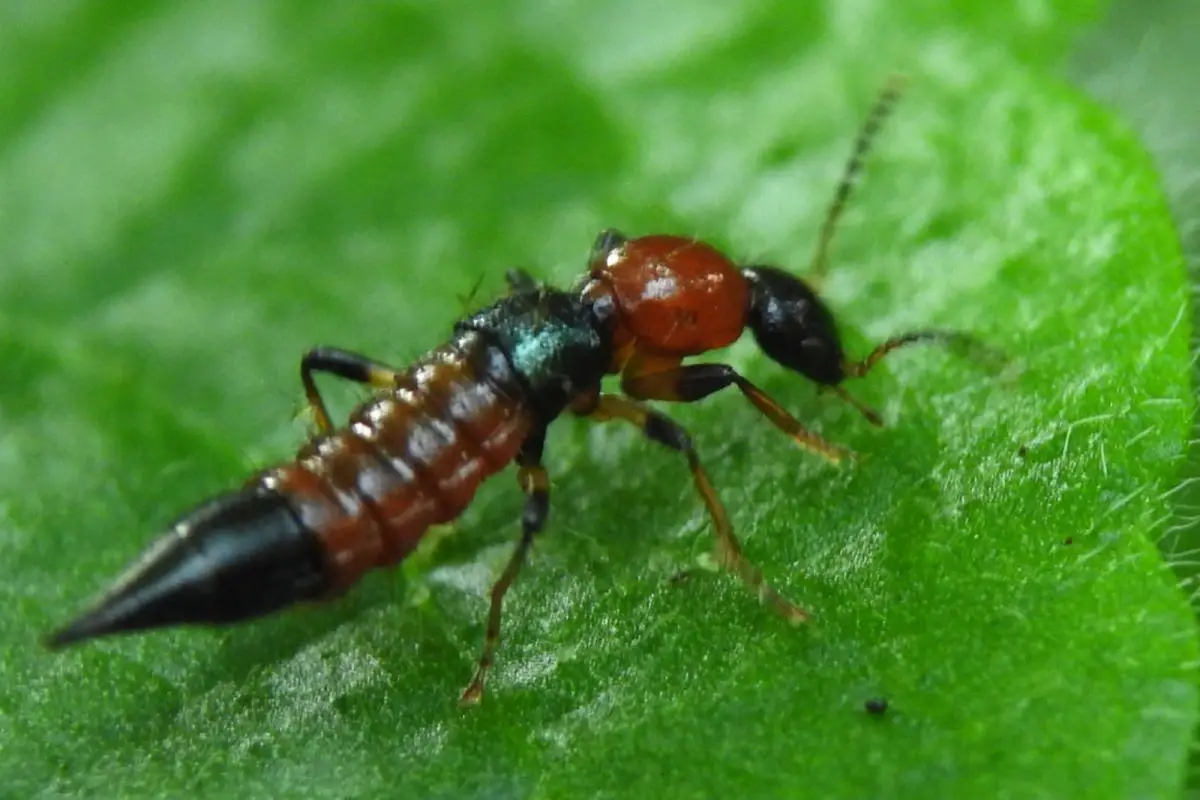
Rove beetles can be found in cool and wet places, like the undersides of leaves in the forest. There are more than 600 different species of rove beetles. Rove beetles have oval bodies with a tapered end that makes them look a little bit like earwigs.
They are dark in color, like earwigs, and they live in similar environments. Earwigs are usually smaller than rove beetles. They have the characteristic pincers on their abdomen that rove beetles don’t have.
10. Woodlice smell bad, and don’t have wings.
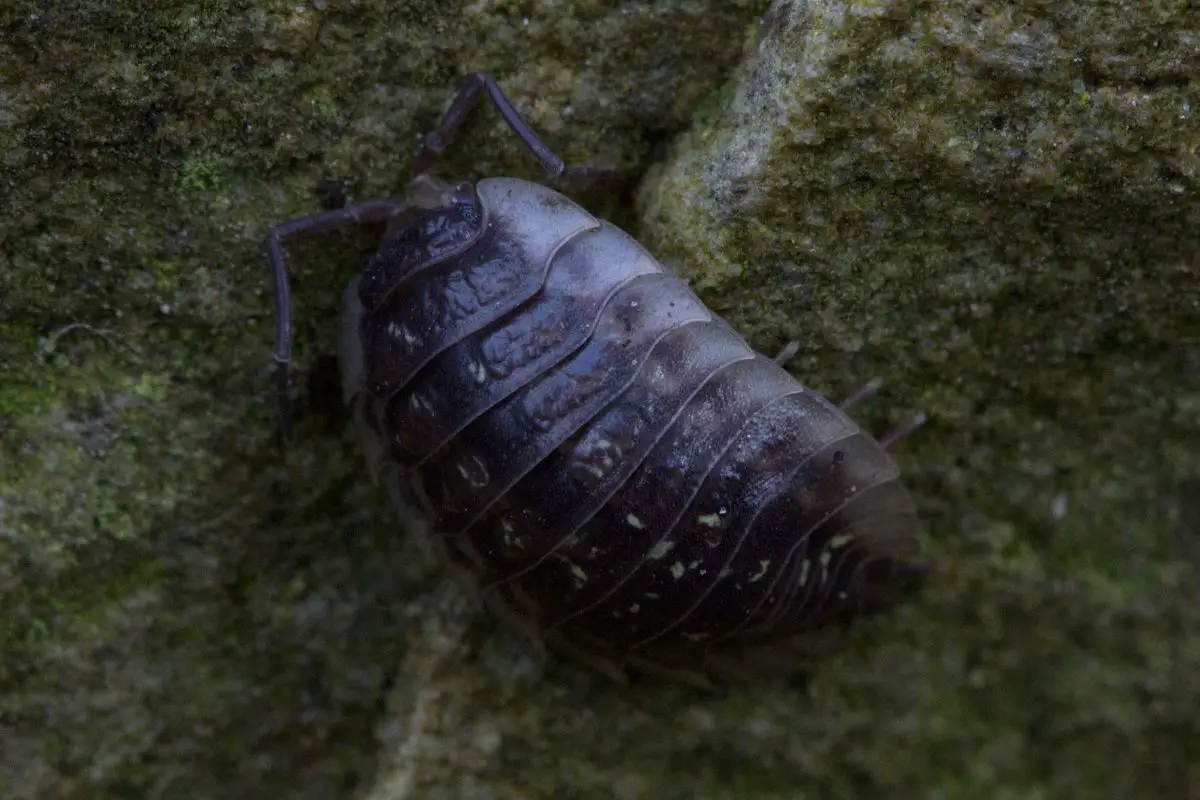
These common creatures are not actually insects. They are arthropods, more related to crabs and lobsters. Woodlice are small herbivores that live in woodpiles.
They feed on decaying organic matter. They are red, yellow, green or brown. Woodlice produce a foul smell, which has led some farmers to call them wood pigs.
They are smaller than earwigs, and don’t have the earwigs’ cerci. They don’t have wings either, and earwigs do. Earwigs have singular antennae, while woodlice have two.
11. Lacewing larvae are babies that look like earwigs.
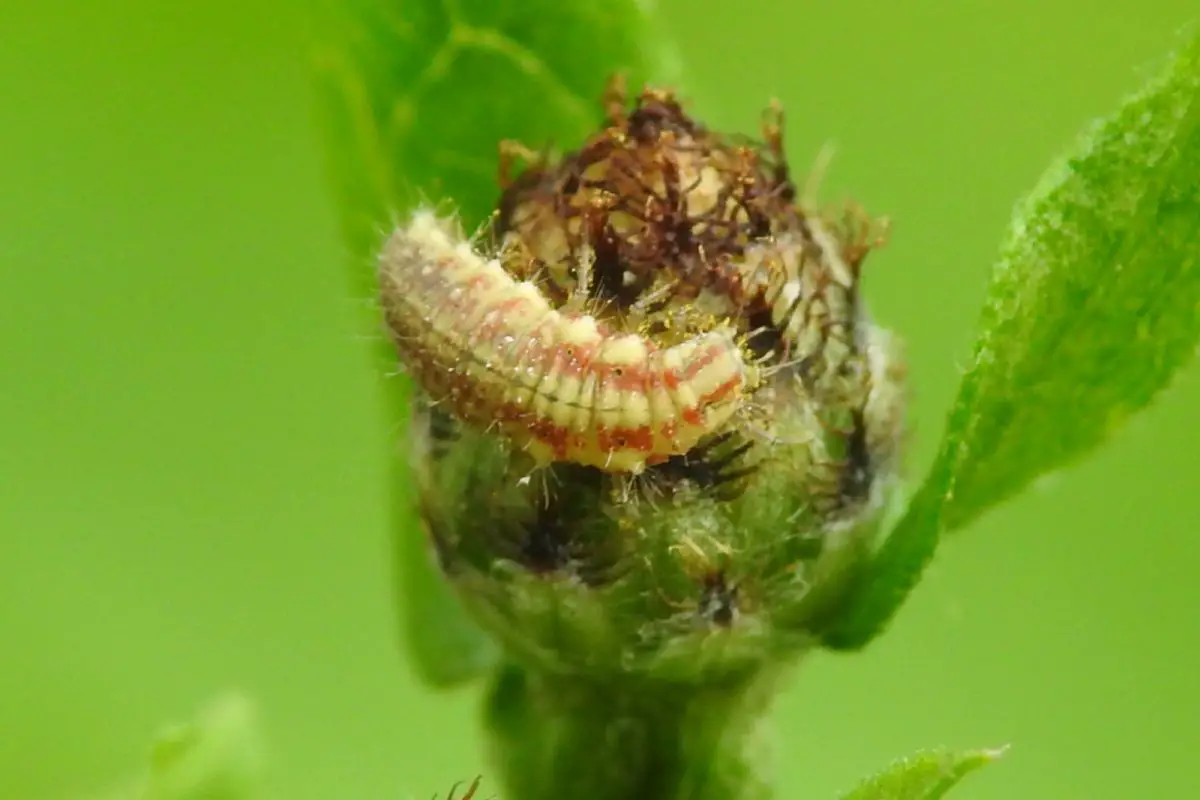
Lacewing are garden predators that kill some of the most common garden pests. Like ladybugs, they are welcomed by humans. You probably wouldn’t mistake a lacewing for an earwig, but their larvae do look a little bit like earwigs.
Lacewing larvae have pincers that they use to grab and hold prey, just like male earwigs do. They are about the same size as earwigs. However, lacewing larvae have soft bodies that are banded with black stripes, while earwigs have a hard segmented body that is brown or black.
Lacewing larvae also do not have wings yet.
12. Aphids are soft bodied garden pests.
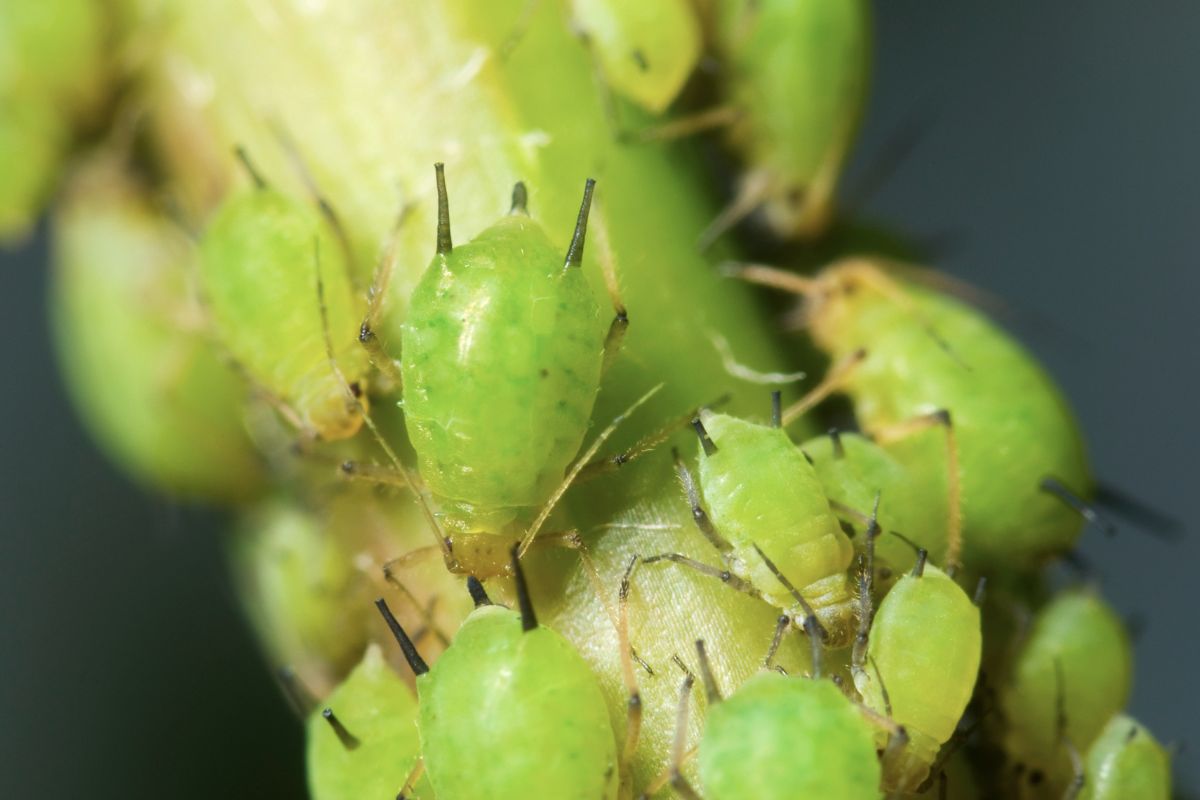
They feed on leaves and spread from plant to plant. They suck the sap from plants and excrete “honeydew,” a gooey substance that quickly covers the host plant. Aphids are annoying to gardeners, but they are a common source of food for dozens of other insects.
Aphids can be green, black, brown, pink, or translucent. They have soft, segmented bodies. Most aphids don’t have wings, although for a part of their life cycle, at certain times of year, they can develop wings.
They have two long antennae, and a small appendage like a tail coming out of their abdomens, called a cauda. Darker colored aphids can look like earwigs, and also live in the same garden environments that earwigs love. Aphids also have a cauda behind them that can look like the pincers of a female earwig.
Earwigs are members of the beetle family, with a hard shell. Aphids have soft bodies, and are usually smaller than earwigs. Earwigs have wings, and aphids don’t.
13. Chinch bugs are like little earwigs that ruin your lawn.
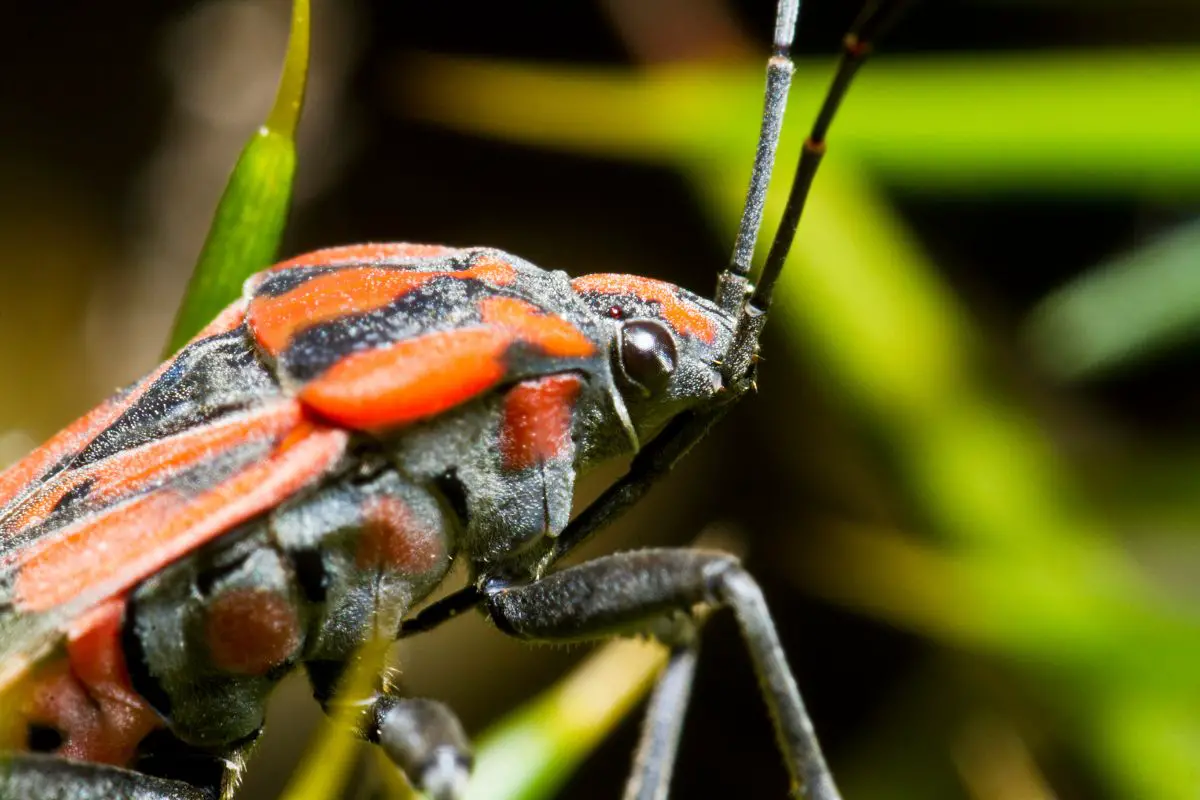
Chinch bugs are small insects that are lawn pests. They suck the fluid out of blades of grass and inject them with a poison that kills the grass. Chinch bugs are very small, growing only to about half an inch long.
They have oval bodies with two overlapping wings on their backs. Chinch bugs have black bodies with brown legs and white wings. Each wing has a dark triangle shape close to the body.
Chinch bugs, like earwigs, are dark in color and like to live in and around plants. Chinch bugs are different from earwigs in that they are usually smaller than earwigs and prefer dry conditions to humidity. Earwigs have wings, but they are not very visible and they are rarely used.
Chinch bugs have obvious wings that they use.
Are Earwigs Harmful to Humans?
No, earwigs are not harmful to humans. They are not venomous, and they don’t carry diseases. Technically, it is possible to get a little pinch from the forcep-like pincers that earwigs have, but they are not dangerous.
The old wives’ tales that earwigs like to crawl into people’s ears are false. Earwigs aren’t interested in your ears. They do sometimes get there by accident, though.
Doctors have removed earwigs from human ears. This isn’t that uncommon for other insects like moths, either!
How Do I Get Rid of Earwigs?
You can spray the infected area with a mixture of water and dish soap, or water and alcohol, to discourage earwigs from returning. If you spray an earwig directly with a mix of rubbing alcohol and water, it will kill them. If you want to dispose of earwigs humanely, you can cover them with a jar or vacuum them up and release them outdoors.
Is it Normal to Have Earwigs in Your House?
Earwigs are common insects. If they show up inside your house, it doesn’t mean that you have a cleanliness problem, or that there is a secret nest somewhere. Earwigs wander into houses like flies, spiders, and other insects.
It’s normal to have earwigs in your home occasionally, during the seasons in which they are active. Of course, if you see a lot of earwigs, you might need to do some more investigating.
Sources:
